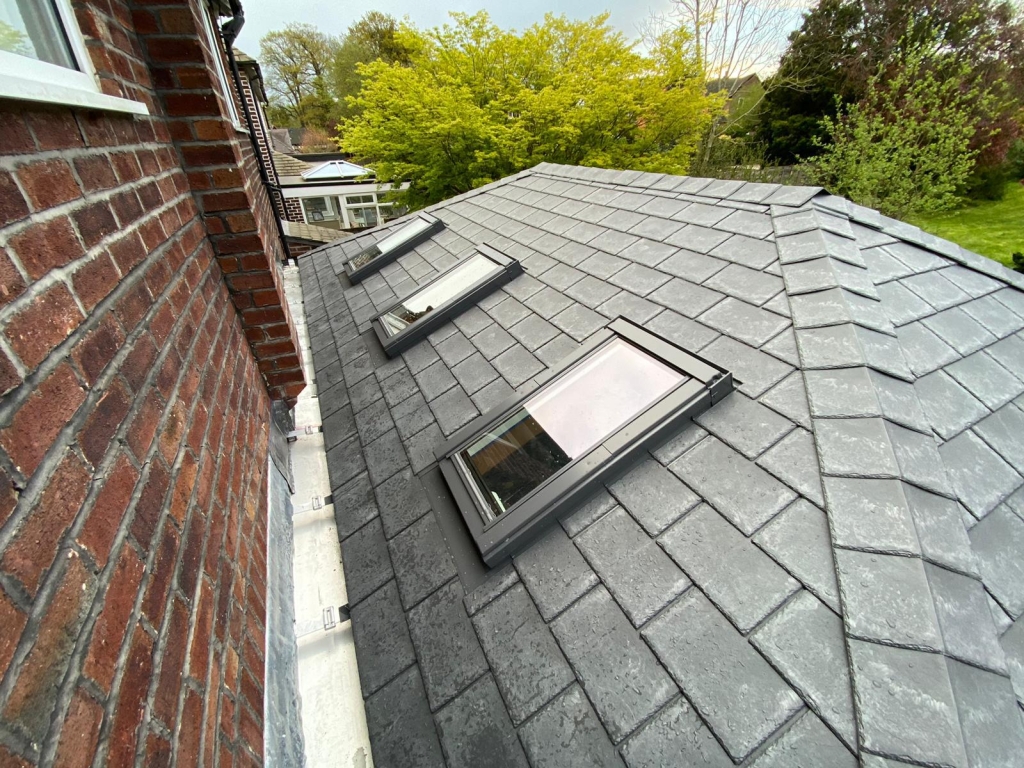Typical Roof Replacement Prices in the UK: A Vital Investment for Your Residence
Typical Roof Replacement Prices in the UK: A Vital Investment for Your Residence
Blog Article
The UK's harsh weather can make roof replacement a necessity, particularly when buildings are exposed to it throughout the entire year. From heavy rainfall and snow in winter to strong winds in the spring and autumn, the roof is one of the most exposed parts of a building, requiring regular attention and care. Roofs can deteriorate over time due to the elements. A replacement is sometimes necessary in order to keep a building's structural integrity. In this article, we will explore the importance of roof replacement, the signs that indicate a roof needs replacing, the process involved, and key considerations when undertaking this essential home improvement project.
The first step in any roof replacement project is understanding when a replacement is truly needed. Water stains, mould, broken tiles or sliding tiles are all common signs. Granules of shingles can also accumulate in gutters. For UK homeowners, roofs that are over 20 to 30 years old are typically nearing the end of their lifespan, especially if routine maintenance has been neglected. While a professional roofer is best equipped to assess the condition of a roof, homeowners can also conduct a visual inspection from the ground to identify glaring problems. A roof survey by a local, trusted contractor will provide you with clarity as well as a cost estimate. Early intervention can often prevent more expensive work such as structural strengthening or timber repair. Roof replacements can save money as well as stress.
It is important to know when the roof needs replacing. This will help you avoid unnecessary costs and further damages. Minor repairs may prolong the lifespan of the roof. However, there are signs that indicate it's time to completely replace the roof. Frequent leaks are a sign to look out for, particularly if the water is starting to enter the house. Small leaks, even if they are not large, can cause extensive damage to the home, such as mold and mildew. Insulation may also be compromised. Other signs include missing or cracked tiles, sagging roof sections, or increased energy bills due to poor insulation. It is time to replace the entire roof if it has been over 20 years and shows these signs. Ignoring these symptoms could lead to more severe problems, including structural instability and extensive interior damage.
The process of Typical roof replacement prices in the UK usually begins with an inspection carried out by a roofing professional. This assessment helps determine the extent of the damage and the most suitable materials for the replacement. Once the necessary materials are selected, the existing roof is removed, and the underlying structure is examined for any issues. If the roof deck is damaged, it may need to be replaced before the new roofing materials are installed. This process may take several days depending on how complex the roof is. Roof replacement is more complex than simply laying down new material. It also involves ensuring the structure underneath is solid, installing proper insulation, and ventilating the roof to avoid future problems. To find extra details kindly go to https://www.roofadvisor.co.uk/how-much-does-a-roof-replacement-cost-in-the-uk/
It is important to select the best roofing material for your roof replacement that will suit both your aesthetic requirements and weather conditions. Slate and tile roofs in the UK are popular because of their longevity and durability. Flat roofs, however, are common in many modern structures or additions. Materials like rubber membrane or bitumen are often used for flat roofs, providing excellent waterproofing and insulation. These materials may be more cost-effective but they might not last as long as slates or tiles. Consult a roofer for the right choice, taking into account factors like budget, weather, and architectural style.
Roof replacement in the UK is an essential part of long-term home maintenance and should not be delayed once signs of significant wear appear. Installing a new roof properly will protect your home from harsh weather conditions, increase insulation and add value to the property. Homeowners can customize their roof according to aesthetic preferences as well as practical requirements. Although the cost can be considerable, the long-term benefits - including energy savings, structural safety, and peace of mind - make it a worthwhile investment. A successful roof replacement requires careful planning, the best contractor and making informed decisions. Replacing an old roof can be a smart investment for UK homeowners who want to safeguard their home's value over the next few decades.